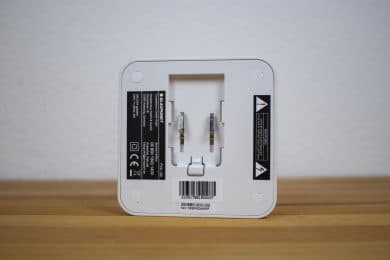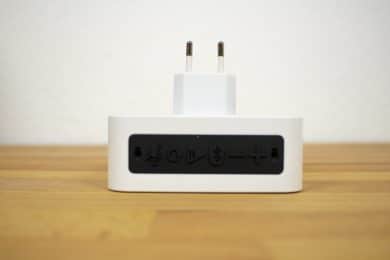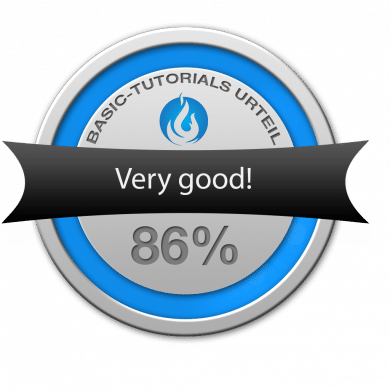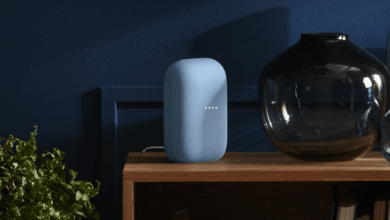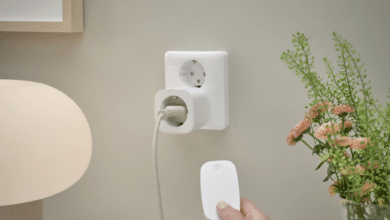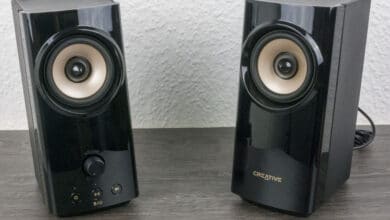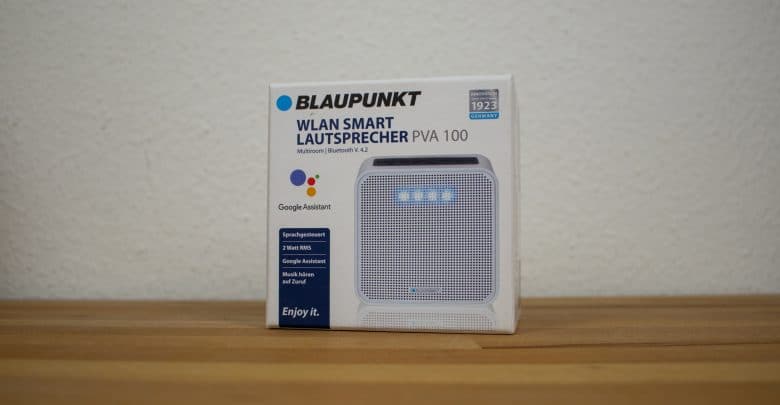
At last year’s IFA Blaupunkt presented the PVA 100*, a small Bluetooth speaker with integrated speech assistant from Google. The device has been available in stores for several weeks now. We have subjected it to an extensive practical test – the results of the test and our assessment of the device can be found in the following lines.
Scope of Delivery, Design and Workmanship
Already shortly after unpacking the device it is clear that the setup will not take very long. In addition to the assembled loudspeaker, there is a power plug for the socket as well as an operating manual. The device is therefore delivered almost ready for use, which is certainly an advantage for many users.
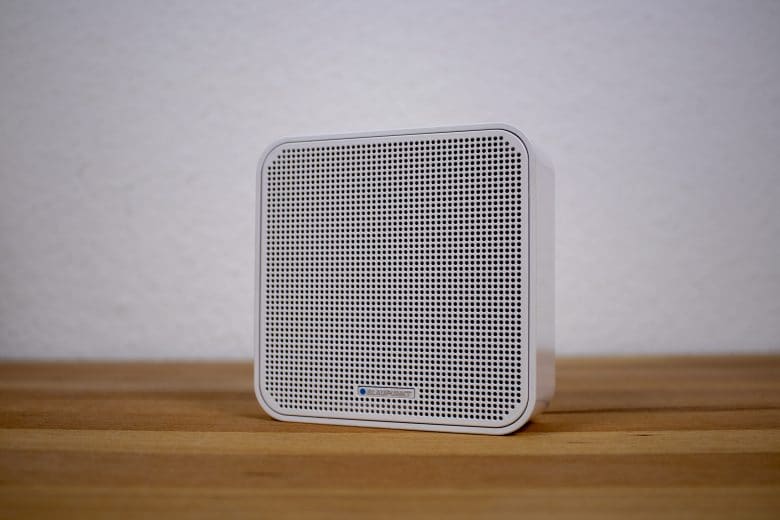
With regard to design, Blaupunkt does not venture any experiments. With dimensions of 10 x 10 x 8.5 centimetres, the loudspeaker is small, square and absolutely unobtrusive. The device is dominated by white high-gloss plastic. Due to the white colour, the small size and the square shape, the loudspeaker can be easily accommodated in a wide variety of facilities. It can be set up quite independently of the design of the living space, since it does not attract attention and is therefore not disturbingly noticeable.
It should also be noted that the device is plugged directly into the socket. Further wiring is not necessary. This also makes it much easier and quicker to place the loudspeaker – there is no need to consider annoying cables when looking for a suitable location.
The workmanship appears to us to be of high quality in the test. The loudspeaker is mainly made of plastic, which is not optimal, but it was processed perfectly. All in all, the design and workmanship are good.
Facility
The loudspeaker is already functional after it has been plugged into the wall socket. The PVA 100 can therefore be used immediately as a Bluetooth loudspeaker. If the integrated language assistant is to be available, however, an additional setup of this assistant is necessary. This requires both the Google Home app and a Google Account.
If you want to use the language assistant, there is no alternative to this setup via Google. So users must first create a Google Account if they don’t have one. This can be done via the accounts.google.com website or directly in the Google Home app. A Google Mail account must also be created during the registration process.
Once the accounts have been created, the language assistant can be set up. This setup succeeds quickly and easily. The user must go through the so-called voice match and can then issue voice commands. If several people want to be able to communicate with the voice assistant, they must also go through the voice match.
In addition, the loudspeaker can be integrated into the home WLAN network via the Google Home app. There is no alternative possibility of integration into the WLAN. This also succeeds quickly and easily. If the instructions appearing in the app are followed, the loudspeaker first establishes a connection to the smartphone on which the app is installed. A connection to the WLAN network is then established. This WLAN use represents an alternative to the Bluetooth connection and is therefore not absolutely necessary.
All in all, the language assistant was set up in just a few minutes during the test. The fact that a Google account is mandatory for the use of the language assistant seems plausible. The fact that such an account is also required for pure integration into the WLAN network, however, could be rated negatively by some users. Blaupunkt could have made its own app available here. If you don’t want to create a Google account, you can use a Bluetooth connection as an alternative.
Functions and Operation in Practice
Once all settings have been made, the speaker can be used to its full extent. The language assistant can be used to request a wide range of information and execute commands. The wizard is activated by the phrases “Hey Google” or “Ok Google”.
The test showed that the microphone was extremely sensitive and always reacted even to loud music or strong ambient noise. This is a clear advantage. Many other loudspeakers with integrated speech assistants no longer react at significantly lower noise levels. The detection is at a similar level to the Google Home Mini.
Another positive feature is that the language assistant can be switched off at the touch of a button. The button is located on the top of the speaker. If it is pressed, the device does not hear any more. Anyone who attaches particular importance to their privacy can therefore use the PVA 100 from Blaupunkt without any worries.
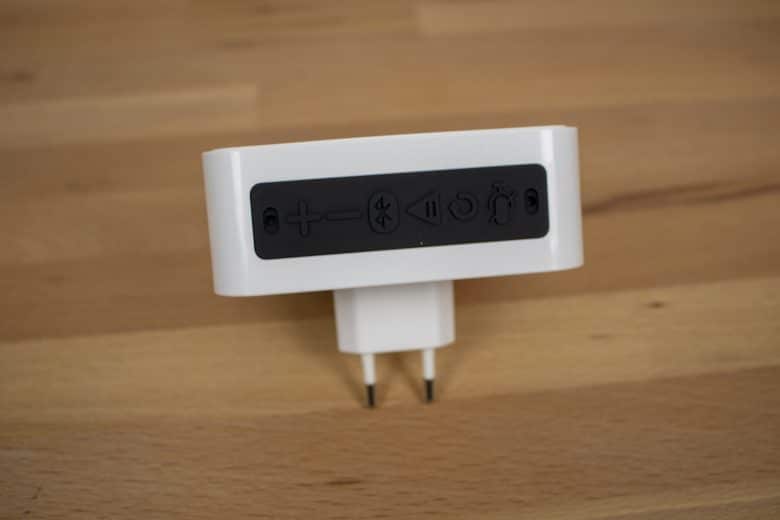
The range of functions is very broad due to the connection to the Google app. All functions of the language assistant are available. In addition, the device can be connected to various streaming services such as Spotify or Deezer in this way. In addition, all smart home devices integrated into the Google Home app can be controlled via voice commands via the loudspeaker. In the test this worked without any problems.
Another advantage is that the speaker can become a multi-room set with other Chromecast speakers. Thus several rooms of the house can be sounded at the same time. This was also successful in the practical test without any problems.
In terms of functionality and operation, it can be said that the device offers many functions, is very comprehensive thanks to the Google Home and Chromecast connection and can also be used with other devices and can be easily operated.
It should be noted that all these functions can only be used if the device is connected to Google. If the speaker is used without Google Home connectivity and without the Speech Wizard, it is easier to use Bluetooth speakers. This is not a criticism, however, as buyers should be aware of the fact that Blaupunkt is promoting the device with the integrated Google Language Wizard. If you don’t want to connect your loudspeaker to Google’s services, you won’t even get the idea to buy a device that was created primarily for this purpose.
Sound
The sound was neither particularly positive nor particularly negative in the test. Outstanding acoustics cannot be expected with such a small device. In view of the dimensions of the device and the wide range of applications beyond music reproduction, the sound is considered appropriate and good under the circumstances. It is largely balanced.
Outstanding acoustics offered by high-end speakers optimized for music reproduction cannot of course be expected. Nevertheless we were satisfied with the sound in the test.
Conclusion of the Blaupunkt PVA 100 Review
All in all, the device tested in conjunction with Google’s language assistant offers a very extensive range of functions. It can be used to control various Smart-Home devices, in the role of the playback device of the speech assistant and as a music output device. In the latter mode, the user benefits from the connection to Google’s services, as various streaming services can be used via Chromecast.
The Blaupunkt PVA 100* is flexible and could convince us in the test. The price-performance ratio is fine.
Blaupunkt PVA 100
Design and Workmanship
Setup
Features
Sound
Value for Money
A very flexible speaker with a wide range of functions.
